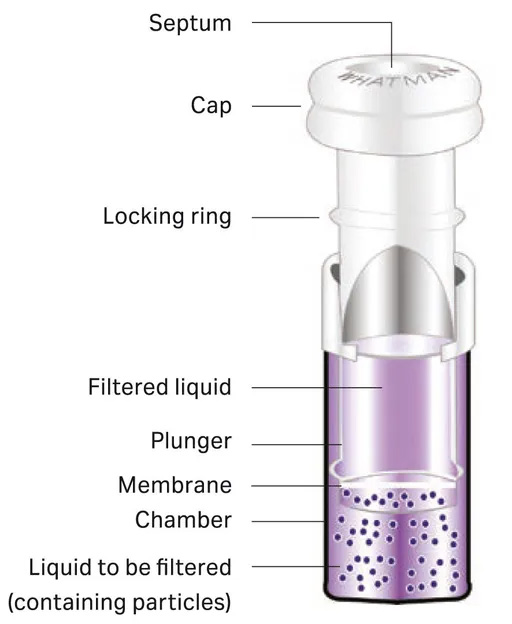costs from $250
products
Filter Vials
Filter vials are an easy-to-use sample preparation system that provides fast, efficient and simple sample preparation by integrating an automated sampling system, a membrane and a snap ring cap with slotted and unslotted septa. The sample is placed in the outer tube and pressed through the membrane by squeezing the inner insert. The sample is filtered and the filter vial can be placed in the autosampler for further processing.
NEW: Altmann Analytik Filter Vials
We can now offer you filter vials of our own brand Altmann Analytik. They are a good and inexpensive alternative to filter vials from other manufacturers. You can choose between filter vials made of nylon, polyethersulfone (PES), polytetrafluoroethylene (PTFE), polyvinylidene fluoride (PFDF) and regenerated cellulose (RC).
The filter system
The filter system consists of an inner insert with a membrane chamber and an outer vial. The filter system includes snap ring caps with a silicone/PTFE slit septum as standard. A slitless septum is available upon request.
- The prepared sample is ready for analysis. Press and go.
- Increase sample integrity with all-in-one bottles and filters
- Reduce waste by replacing syringe, syringe filter, glass vial and cap
- Compatible with nearly all autosamplers
Cytiva Whatman Mini UniPrep Filter Vials
Whatman Mini UniPrep syringeless filters can be used to remove particles from samples more quickly and easily when preparing samples for HPLC analysis. Mini-UniPrep filters can be used in conjunction with standard laboratory robotics on HPLC instruments with sensitive needles, increasing throughput and significantly improving laboratory productivity.

Save time and money with UniPrep filters
Whatman's Mini UniPrep syringeless filter - now with a new, durable plastic cap - enables faster and easier particle removal from samples for HPLC analysis. In fact, Mini UniPrep filter units can be used to prepare samples in just a third of the time compared to other methods. This time saving, together with the reduced cost of using fewer consumables in the sample preparation process, offers major benefits for your laboratory. The Mini UniPrep also protects samples from degradation by UV radiation.
Whatman's new syringe-less Mini UniPrep filter prepares samples for HPLC/UHPLC analysis three times faster than the conventional method using syringe filters. These new "all-in-one" filtration and collection vessels reduce sample preparation time by two-thirds and significantly reduce waste as fewer consumables are required. When the time savings and reduced costs are added together, the benefits to the laboratory are enormous.
Features and benefits of Whatman's Mini UniPrep filters
- User-friendly: The "all-in-one" filtration and collection vessels reduce the required sample processing time in the laboratory by around two thirds.
- Compatible with standard autosamplers: Speeds up sample preparation and analysis.
- Reduced need for consumables: Reduces costs by up to 40 per cent.
- Suitable for automated processing: Thanks to the slotted septum caps that are also available, Mini-UniPrep filters can be used in conjunction with standard laboratory robotics on HPLC devices.